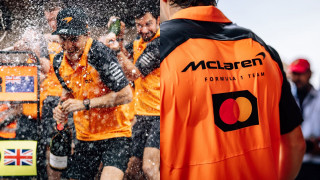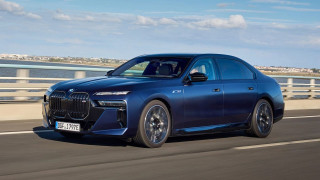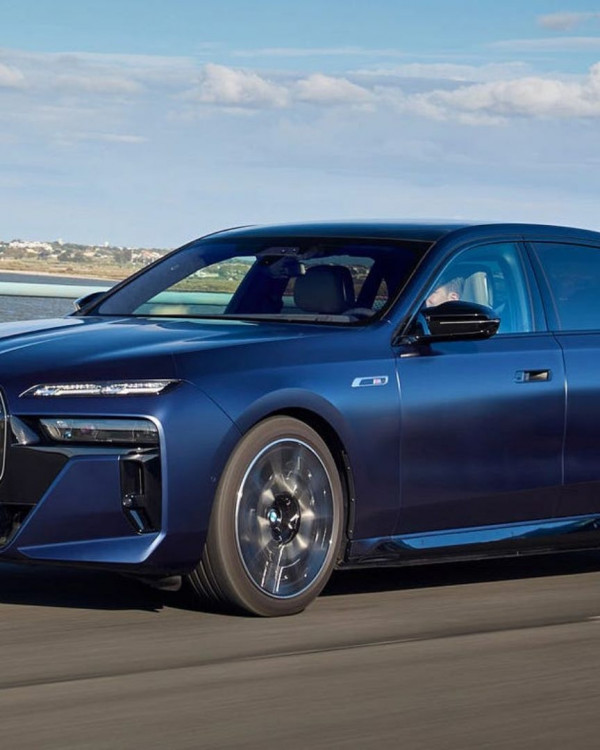
When it comes to owning a luxury car, most enthusiasts and first-time buyers focus heavily on performance specs, features, and aesthetics, but often overlook one of the most critical components that define both performance and safety: the tires. Choosing the right tire isn't just about size or brand, it's about how it connects your car to the road, how it performs under pressure, and how it complements the overall driving experience. Whether you're driving a German powerhouse or a refined British cruiser, your tires influence everything from handling and braking to fuel efficiency and cabin comfort. The wrong tire can diminish the luxury feel, while the right one enhances every ride. Here's a 10-point checklist to help you make the right call.
1. Know Your Tire Size and Specification

Start with your car manual or the tire placard inside your driver-side door. Tire size is defined by a combination of width, aspect ratio, and rim diameter (e.g., 245/45 R18). This isn't just technical jargon - manufacturers arrive at these specs after extensive testing to ensure your car delivers the intended balance of ride quality, fuel efficiency, and grip. Swapping in the wrong size might cause rubbing against wheel wells, poor suspension response, or even errors in your speedometer.
Pro Tip:
Stick to OEM-recommended specs unless you're upgrading under expert guidance. Upsizing or downsizing without considering offset, load index, or speed rating can compromise safety and handling.
2. Understand the Tire Type: Touring vs. Performance vs. Run-Flat

Luxury cars come with varying tire needs. Touring tires offer a quieter, more comfortable ride - perfect for long-distance cruising. Performance tires enhance grip and precision, best suited for spirited driving. Run-flats give you added convenience in case of punctures, though they can be stiffer. Each type has its own personality. Pick one that mirrors your lifestyle, not just your driving fantasy.
Pro Tip:
Performance tires wear faster and may be noisier. Evaluate your usage honestly. If you're mostly navigating city traffic, comfort should trump sportiness.
3. Prioritize Road Conditions You Drive On Most
India's road diversity is legendary - from ultra-smooth expressways to pothole-prone inner cities. Your tire must match the terrain. Look for stronger sidewalls, better impact resistance, and durability for unpredictable urban roads. On the flip side, if you spend more time on highways, a tire with lower rolling resistance will enhance efficiency without sacrificing too much comfort.
Pro Tip:
If you're frequently driving in cities like Delhi or Bengaluru, prioritize comfort and durability. For highways, go with tires that have low rolling resistance for better mileage.
4. Check the Tread Pattern

Tread design isn't just for aesthetics. Asymmetrical patterns offer a balance of wet and dry grip. Directional tires are better for high-speed stability and water dispersion. Symmetrical patterns are long-lasting and quiet ideal for city use. The tread determines how your car grips, brakes, and behaves in tricky weather or surfaces. Don't treat it as a one-design-fits-all feature.
Pro Tip:
For Indian monsoons, look for tread patterns with wide grooves that channel water away to prevent hydroplaning.
5. Consider the Tire's Load Index and Speed Rating
Each tire is marked with a load index (how much weight it can safely carry) and a speed rating (maximum speed capability). Luxury cars are heavier and often have more powerful engines, making this spec non-negotiable. A mismatch here doesn't just void warranty, it puts you and the car at serious risk.
Pro Tip:
Never go below the manufacturers' recommended load and speed ratings. Doing so can lead to premature wear or even catastrophic failure.
6. Evaluate Ride Comfort and Noise Levels
Luxury cars are designed to cocoon you in silence and smoothness. Tire construction plays a huge role in that. New-age tires use advanced materials, silica compounds, and foam layers to reduce road noise and enhance ride comfort. Choose tires that don't just look good but also feel right in everyday use, especially at low and medium speeds.
Pro Tip:
Look for reviews that test NVH (Noise, Vibration, Harshness) levels of the tire, especially if you're used to driving on concrete or older asphalt surfaces.
7. Pay Attention to Wet and Dry Grip Ratings

Grip is king, especially in sudden braking scenarios. Whether you're dealing with Mumbai rains or open expressways, traction under extreme conditions can save lives. Look for detailed test results, braking distance comparisons, and user reviews. A tire that grips well gives you more confidence behind the wheel, especially in panic situations.
Pro Tip:
A tire with an 'A' wet grip rating can reduce braking distance by several meters compared to a lower-rated tire - critical in monsoons or emergency stops.
8. Understand Tire Compound and Durability

Tire compound is the soul of the tire. A softer compound grips better but wears quicker. Harder compounds last longer but may compromise on comfort and grip, especially in wet conditions. You need to strike a balance based on whether you use your car as a weekend toy or a daily warrior.
Pro Tip:
If your luxury car is a daily driver, opt for a tire that offers a balance of compound softness and tread life. Look for UTQG (Uniform Tire Quality Grading) ratings for wear indicators.
9. Check the Manufacturing Date

Tires have a shelf life. Over time, the rubber compound hardens and becomes less effective, even if unused. Tires older than 5-6 years are considered unfit for performance driving. Make sure your "new" tire hasn’t been sitting in a warehouse gathering dust for two years.
Pro Tip:
Even unused tires degrade over time. A 2-year-old "new" tire sitting on a shelf isn't ideal for your ₹1-crore car.
10. Don’t Ignore After-Sales Service and Warranty

Premium tires often come with added perks like road hazard protection, replacement warranties, and even doorstep fitment. Given how specific luxury car tires can be, after-sales support is just as important as the rubber itself. A tire is a long-term investment, service should be too.
Pro Tip:
Choose a tire brand with a strong service network in your city. Ask about road hazard coverage - especially in areas where potholes and debris are a daily affair.
Still wondering what those numbers and letters on your tire sidewall mean? Watch out for our next article where we decode Tire Load Index and Speed Ratings and explain why they matter more than you think.
Want to take your car care obsession up a notch? Don't miss our DIY Detailing Guide: Keeping Your Luxury Car Shining Like Brand New, packed with hands-on tips to maintain your car's pristine finish.


















Your comment will be verified by admin before going live